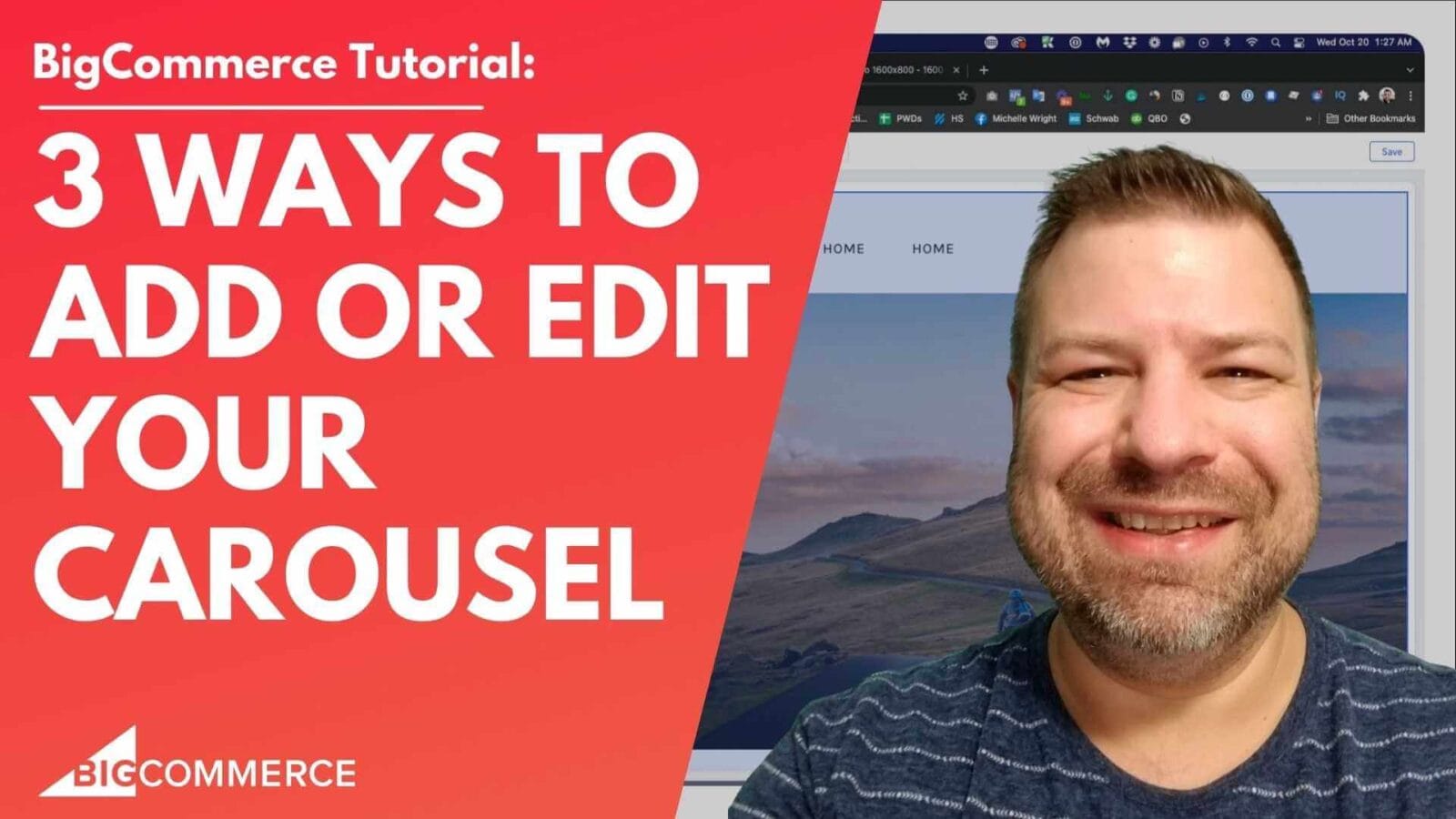(00:00)
Hey there! In this video, I’m going to show you how to turn on or publish your BigCommerce blog.
Before we get started, my name is Cal, and if you find this useful, hit subscribe, and I’ll show you more cool stuff over time! Alright, let me share my screen.
When you come into your BigCommerce store, you’ve probably already discovered this under Storefront > Web Pages. There’s an item here that says “Blog” and, at least right now, it’s got a red X next to it, meaning it’s not showing up.
(00:31)
In the dynamic menu, it says “built-in blog” and “blog,” but let’s be honest, nobody really wants to call their blog “blog” anymore—unless you do! In that case, blog on, bro.
Let’s do a couple of things.
Click into the blog, which takes you to Storefront > Blog. As you can see, I’ve already written a couple of sample posts.
To turn the blog on, just hit this little toggle here, and boom—it’s on.
Technically, all the articles were already exposed and may have been indexed by Google, but the blog overview page itself (the homepage of your blog) is what was hidden. Now that’s turned on and active.
If this isn’t toggled, that overview page doesn’t exist and will return a 404 error if anyone tries to visit it.
(01:26)
One thing I’ll show you real quick: Maybe you don’t want to call it “blog” because that’s very 2005. Let’s rename it.
Click the three dots (I know I did that a bit fast) and rename it to “Articles” or whatever you prefer.
You can also tweak other settings, like turning on Disqus for comments or enabling social sharing, but I’m going to skip those for now. Just click “Save,” and we’ve renamed the blog to “Articles.”
(01:56)
Now, when we go back to the Web Pages menu, you’ll see it says “Articles” instead of “Blog.”
It’s still a “built-in blog” page type, but we’ve got a green checkmark, meaning it should now show up in our menu. Let’s check the front-end of the site, and you can see “Articles” is now showing in the menu.
(02:31)
When we visit the Articles page, the blogs show up. Though admittedly, they don’t look super great right now.
The biggest issue you’ll likely want to fix is making the images not, well, stupid-sized. Let me show you how to do that real quick.
(03:02)
I also want to show you how to remove Articles from the main menu. A lot of you might want your blog page active, but prefer to link it in the top bar, footer, or elsewhere—without using up your valuable main menu space.
There are two ways to do this:
You can go into your header files and comment it out.
A cleaner way is to use CSS to target the specific item and hide it.
(03:32)
Let’s inspect the element to target it. The nav page items all have the same class, and the anchors within them also share a class, so what’s different? The ARIA labels and the hrefs. These are useful, especially for ADA compliance. If you’re not ADA compliant, consider reaching out to someone who can help with that.
Click the “plus” sign, and it’ll target the nav Pages – action class. However, to be more specific, I’ll copy the ARIA label and add it as an attribute selector. I’ll test it by applying a background color to confirm we’re targeting the correct item.
Once confirmed, set the display to “none,” and the menu item will be hidden.
(04:36)
You can paste this CSS into your file. If you don’t have ARIA labels, you can target it by href instead, but note that this method is more fragile if URLs change.
(05:06)
Lastly, let me show you how to make those blog images bigger, which is super easy.
A lot of people think the blog looks bad, and while that’s partly true, fixing the image sizes goes a long way. Let me show you how to make them bigger.
Go to Storefront > Themes, click Customize, then select the art palette icon. Go to Global settings. Depending on your theme, this may look different. If you’re using Cornerstone or Roots, which are good themes, you should see a setting for Blog image size. If not, some sketchier themes might not have this option.
(06:06)
In Cornerstone, go to Global, and scroll down until you see Blog Image Size. Here, you can choose between “Optimize for Theme” or “Specify Dimensions.”
Let’s specify dimensions. The problem right now is that the max width is set to 190 pixels, which is way too small. Let’s change that to 1200 pixels. I’ll also set the max height to 628 pixels, and then hit “Publish.”
(06:44)
Now, even in the previewer, you can see the images look a million times better just by increasing their size. I’m not sure why they don’t set this as the default, but at least we’ve got it fixed.
(07:25)
So, those are a few quick things you can do to turn on your blog and make it look more presentable in no time flat.
Leave me a comment and let me know what you’re struggling with—maybe it’ll be the topic of my next video.
I appreciate you guys being here, thanks!


